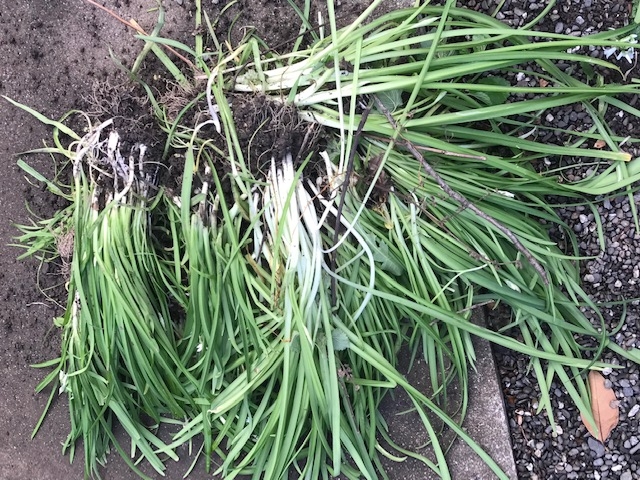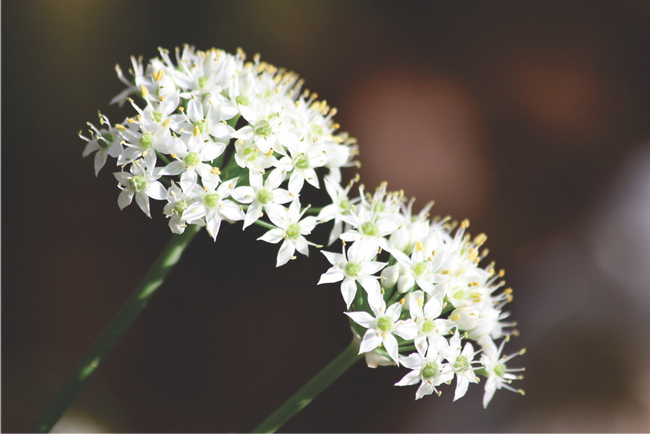by Cindy Watter

Over the years, the original crop I had almost eliminated after I bought my house had crept back, and I did a haphazard job of digging them up, every spring. Last year I let them go, and this spring was rewarded with a lush growth, starred with tiny bell shaped white flowers. How did it spread so quickly? Could it have been a side effect of a two-year-old pollinator habitat, which attracted birds that carried seeds around, besides bees and butterflies? Who knows? In any case, they compete for space, water, and nutrients with other plants, so they had to go.

As Pam Pierce stated, wild onions are good to eat. The entire stalk is excellent grilled, and you can chop them into a frittata or omelet. The greens are quite crunchy, and were tasty in a wild rice salad. I am told that there are restaurants that will pay for the flowers—they look nice in salads. I am sure I will always have an adequate supply for my own use.
Informational links:
Calflora https://www.calflora.org/cgi-bin/species_query.cgi?where-calrecnum=238
Peirce, Pam, Wildly Successful Plants, Sasquatch Books, 2004